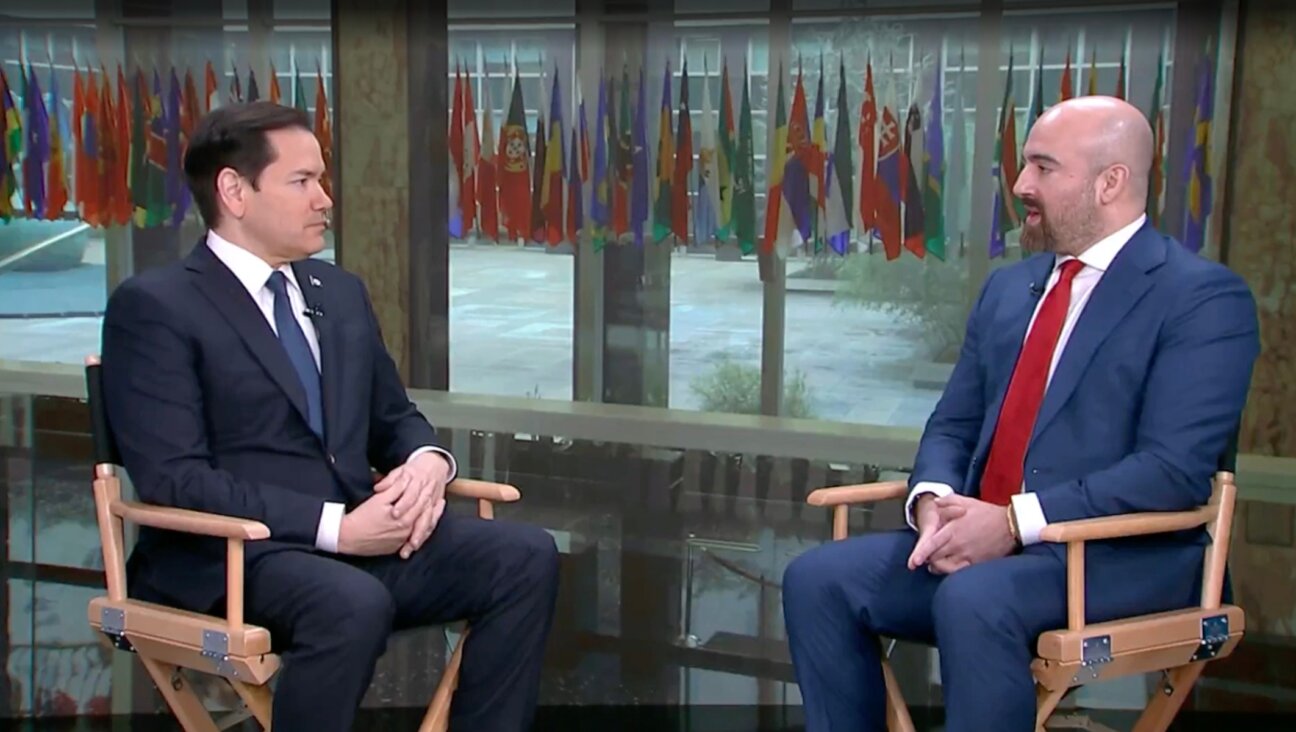‘Bell Curve’ Scribe Mulls Roots of Jews’ Brainpower
One of the most controversial and influential public intellectuals in American life is weighing in with a new theory on the roots of Jewish intelligence.
Charles Murray, famous for “The Bell Curve,” his book on the racial basis of intelligence, has published an article in this month’s Commentary, titled “Jewish Genius.” In the essay, Murray theorizes that the preponderance of very smart Jews throughout the ages can be traced back to evolutionary processes that began even before the destruction of the Second Temple in Jerusalem.
“There is reason to think that selection for intelligence antedates the 1st century C.E.,” writes Murray, a scholar at the conservative-leaning American Enterprise Institute. “From its very outset, apparently going back to the time of Moses, Judaism was intertwined with intellectual complexity.”
At the beginning of his article, Murray says that he, a “Scots-Irish Gentile,” was writing about the topic because his Jewish colleague and co-author, Richard Herrnstein, was always hesitant to take it on. And his article was published barely a year and a half after the media was set ablaze by an academic article positing an evolutionary link between the high IQ scores of Ashkenazic Jews and Jewish life in the Middle Ages.
One of the authors of that previous study, Gregory Cochran, has already taken fire at Murray’s effort in the same field.
“I would call it pure speculation,” said Cochran, who is a researcher in Utah. “I don’t think there’s any evidence he’s right.”
Both Cochran and Murray start from recent evidence that Ashkenazic Jews tend to have higher IQ levels than other ethnic groups. But Murray goes beyond Cochran to argue that in the Middle Ages and the first millennium, both Ashkenazic and Sephardic Jews exhibited unusual levels of intelligence. As one piece of evidence, Murray points to the Jewish role in writing both the old and new testaments of the Bible.
Murray acknowledges that his work is based more on historical impressions than on rigorous science, but it is already provoking debate in a corner of the intellectual world that tends to make Jews very uncomfortable: genetics.
Cochran’s work was widely panned by geneticists, and Murray makes even less of an effort to placate these experts with scientifically grounded evidence. The assumption from which both researchers work — that intelligence has a genetic basis — is still disputed by many scientists. Harry Ostrer, a leading Jewish geneticist, said that Murray’s work was “speculation” and that both Murray and Cochran trade in a “love of group typology — Jews are smart and blacks are great athletes.”
In “The Bell Curve,” Murray and his co-author argued that African Americans, as a group, were less innately intelligent than white Americans. The work was attacked by many commentators who took issue with Murray’s methodology and with his reliance on funding from right-wing foundations. Still, Ostrer said that Murray’s new work “asks some interesting questions.”
Murray sets out to find periods of history when the Jewish population was subjected to a dramatic change that may have resulted in survival of the more intelligent members. He points to the Babylonian captivity, when the best and brightest Jews were carted away to what is now Iraq. He also looks at the effect of an edict in 64 BCE that mandated universal education for all Jewish males. He argues that this, along with the talmudic mode of Jewish religion after the destruction of the Second Temple, may have pushed out less-intelligent members of the community.
Ostrer said that these theories eventually might be tested by geneticists doing regression analysis. For now, though, to Ostrer, the most interesting element of the debate is the continuing controversy about the subject.
“We’re really in this period of Judophilia right now,” Ostrer said. “Clearly in the mainstream western Christian world, Christian academics and intellectuals like and admire Jews a lot.”
The Forward is free to read, but it isn’t free to produce

I hope you appreciated this article. Before you go, I’d like to ask you to please support the Forward.
Now more than ever, American Jews need independent news they can trust, with reporting driven by truth, not ideology. We serve you, not any ideological agenda.
At a time when other newsrooms are closing or cutting back, the Forward has removed its paywall and invested additional resources to report on the ground from Israel and around the U.S. on the impact of the war, rising antisemitism and polarized discourse.
This is a great time to support independent Jewish journalism you rely on. Make a Passover gift today!
— Rachel Fishman Feddersen, Publisher and CEO



















